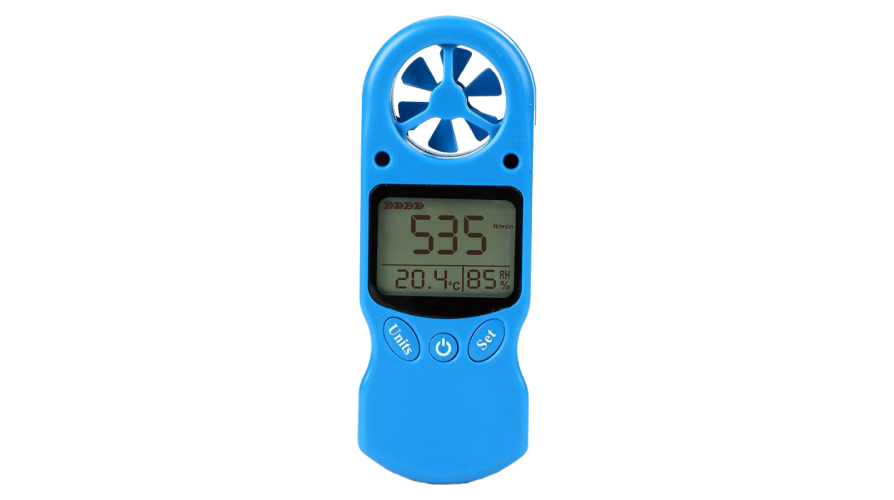Anemometers Introduced: Comprehending Their Significance in Ecological Tracking and Precaution
The role of anemometers in ecological surveillance and safety actions is typically taken too lightly, yet their significance is undeniable. From meteorology to air travel safety and security, anemometers play a critical role in offering precise information that educates decision-making procedures and boosts total security.
Background of Anemometers
The evolution of anemometers can be traced back to the old people where fundamental wind measuring devices were initial utilized. These early wind measurement devices laid the foundation for the growth of extra sophisticated anemometers with time. Among the earliest known anemometers was the hemispherical mug anemometer created by Leon Battista Alberti in the 15th century. This layout contained four hemispherical mugs that collected wind energy, supplying a dimension of its strength based upon the rate of turning.
In the 18th century, the popular scientist John Thomas Romney Robinson introduced the Robinson anemometer, which featured four hemispherical mugs placed on straight arms that prolonged from a main axis. This design became a criterion in atmospheric dimensions as a result of its accuracy and integrity. Throughout the years, developments in modern technology caused the advancement of more contemporary anemometers, including ultrasonic anemometers and laser Doppler anemometers, using boosted precision and efficiency in gauging wind speed and direction. The history of anemometers showcases an exceptional trip of development and progress in the area of meteorology.
Kinds of Anemometers
Throughout the area of weather forecasting, numerous kinds of anemometers have been developed to accurately gauge wind speed and instructions. Sonic anemometers make use of ultrasonic signals to determine wind speed and direction accurately. Hot-wire anemometers run based on the principle that the cooling impact of wind on a warmed wire is symmetrical to the wind speed.
Applications in Meteorology
Having reviewed the different sorts of anemometers used in meteorology for gauging wind speed and instructions, it is necessary to discover their functional applications in the area. Anemometers play an important duty in weather forecasting by supplying real-time and accurate information on wind problems (anemometer). Meteorologists make use of anemometers to keep an eye on wind rate and direction to forecast weather patterns, issue cautions for severe weather events like hurricanes, tornados, and cyclones, and examine climatic problems for air travel safety
In weather forecasting, anemometers help in recognizing neighborhood and regional wind patterns, which are crucial for anticipating climate changes and determining climatic patterns. These gadgets are additionally utilized in research to study microclimates, metropolitan heat islands, and air pollution dispersion. Additionally, anemometers are utilized in farming to optimize plant administration methods, such as irrigation and chemical application, based upon wind problems.
Relevance in Aviation Security
An important element of ensuring aviation safety hinges on the precise monitoring of wind problems utilizing anemometers. Anemometers play a critical role in aviation by offering real-time information on wind rate and direction, helping pilots in making informed choices during touchdown, trip, and take-off. Strong and unforeseeable winds can substantially influence aircraft operations, making it necessary for aeronautics authorities to rely on exact wind dimensions to make certain the safety of guests and team.

In the dynamic environment of aviation, where even small modifications in wind rate and direction can have extensive effects, anemometers stand as essential devices for promoting secure and safe and secure flight.
Function in Environmental Research Study
Just how do anemometers add to developments in ecological study? Anemometers play a crucial role in ecological research study by supplying crucial data on wind speed and direction. This info is important for recognizing numerous atmospheric procedures, such as air pollution dispersion, weather condition patterns, and environment change. By accurately measuring wind qualities, anemometers aid researchers evaluate the motion of pollutants in the air, analyze the impact of industrial discharges, and forecast the spread of pollutants in the atmosphere.


Verdict
In conclusion, anemometers have played a critical function in ecological surveillance and safety and find out security procedures. Comprehending the relevance of anemometers is crucial for properly determining wind speed and direction, which is essential for predicting climate patterns, guaranteeing risk-free aeronautics operations, and performing check it out ecological research studies.
One of the earliest known anemometers was the hemispherical cup anemometer developed by Leon Battista Alberti in the 15th century. Over the years, developments in innovation led to the growth of more contemporary anemometers, consisting of ultrasonic anemometers and laser Doppler anemometers, offering raised accuracy and effectiveness in gauging wind rate and direction. Hot-wire anemometers run based on the principle that the cooling effect of wind on a heated cable is symmetrical to the wind speed. Meteorologists use anemometers to check wind rate and navigate to this website direction to forecast weather condition patterns, concern cautions for severe climate events like tornadoes, cyclones, and tornados, and examine climatic conditions for aeronautics security.
Understanding the value of anemometers is essential for accurately gauging wind rate and instructions, which is important for anticipating weather condition patterns, ensuring secure aviation procedures, and performing ecological studies. (anemometer)